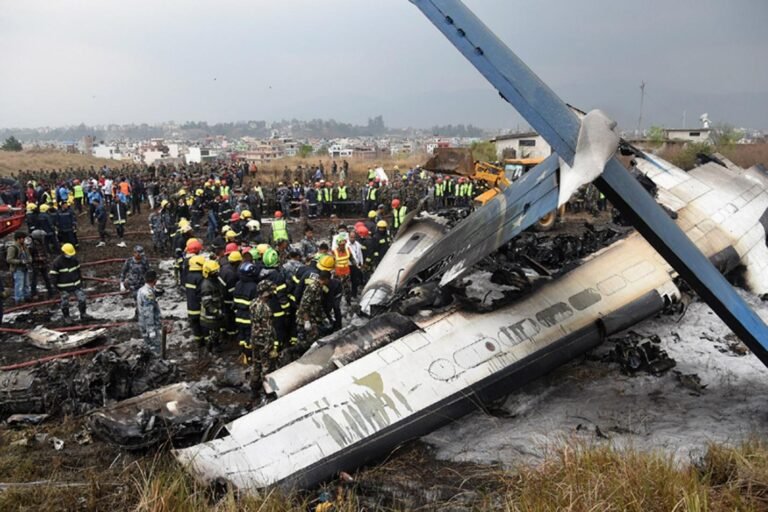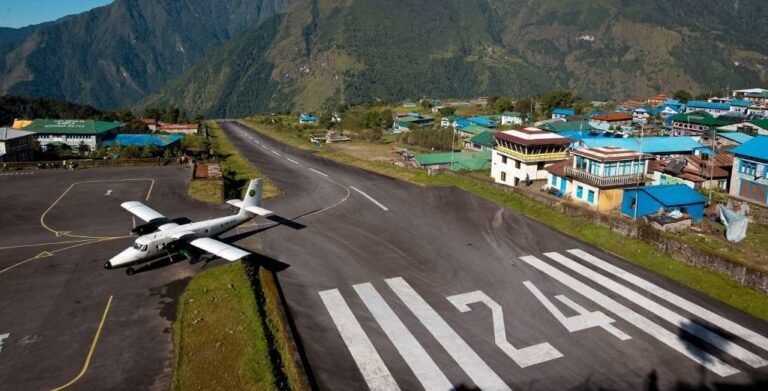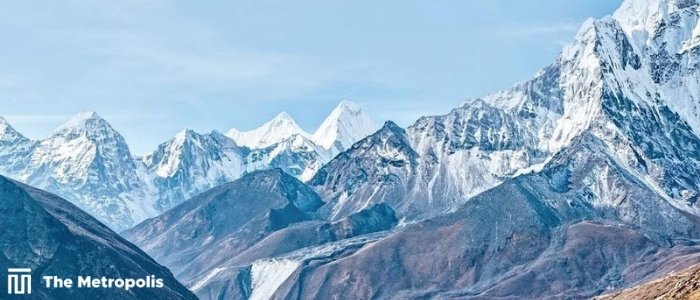Himalayan Mountains, Nepal (Photo: Collected)
Dangerously Beautiful Nepal
Ripon Kumer Sarker –
It is a nightmare for tourists to travel to Nepal by plane. Thousands of tourists visit Nepal every year. Why not? 8 of 14 eight-thousanders (more than 8,000 meters or 26,246 feet above sea level) mountains in the world, as declared by The International Mountaineering and Climbing Federation (UIAA), are situated in Nepal.
Mount Everest (8848 meters, the highest mountain in the world discovered by a Bengali mathematician Radhanath Shikder), Kanchenjunga (8598 meters), Annapurna (8091 meters) and other Himalayan mountains attract all kinds of tourists from all over the world. Due to its high mountains, Nepal has become the most popular tourist destination for trekking lovers. However, a lot of people come just simply for a glimpse of the peak far above with their own eyes. Nepal is always busy with a lot of foreign tourists around the year.
This beautiful tourist destination is burdened with a dangerous landscape as it is surrounded by hundreds of mountains and has a limited plain land only for airports. Though Nepal has 43 airports, only 3 of them are international airports, 2 of which opened as international within the last 8 months only. All these airports have comparatively smaller or limited landing spaces due to which it is often referred to as one of the world’s riskiest places to fly.

There have been 19 plane crashes in Nepal in the last 10 years. In 2018, a US-Bangla Airlines plane crash killed 51 passengers (out of 71). The other crashes were on domestic flights.
Lukla Airport, just 40 minutes by air distance from Kathmandu, is considered the most dangerous airport on the planet. The narrow runway (527 meters long and 24 meters wide) starts at the edge of a mountain top. It can handle only small planes and helicopters. High wind at the mountain top, bad weather, the topography of Nepal, and low-quality aircraft make it extremely difficult for the pilot to control. A slight mistake by a pilot may cause a devastating accident. 2008 Yeti Airlines crash in Lukla killed all 19 passengers on a domestic flight. Recently on 15th January 2023, another Yeti Airlines plane crash killed all 69 passengers on board. Yet tourists keep coming through this airport as it is the gateway to Mount Everest.

Nepal observed the highest number of casualties in 1992 when an Airbus 300 operated by Pakistan International Airlines crashed during its landing at the Tribhuvan International Airport in Kathmandu and all 167 people on board were killed.
Other mention-worthy crashes were the 2022 Tara Airlines crash near Mustang (all 22 died), the 2019 Air Dynasty helicopter crash near Kathmandu (tourism minister of Nepal and 6 others died), the 2016 Air Kasthamandap crash near Kalikot (2 died, 9 injured), the 2015 US helicopter crash (6 US mariner and 2 Nepali soldiers died), the 2012 Sita Air crash near Kathmandu (all 19 died), the 2012 Agni Air crash near Jomsom (15 died out of 21), the 2011 Buddha Air crash near Lalitpur (all 11 died), the 2006 Shree Air helicopter crash near Eastern Nepal (all 24 died), the 2001 helicopter crash near Western Nepal (princess of Nepal and other 3 died out of 6), the 2000 Royal Nepal Airlines crash near Dhangadhi (all 22 died), the 1993 Everest Air crash near Chule Ghopte hill (all 16 died), and the 1992 Thai Airways crash near Kathmandu (all 99 died).
Flight safety in Nepal is being closely monitored, and regulations governing flying in bad weather, requiring airports and airlines to halt operations under specific situations, and giving final approval to air traffic services on all flight plans have all been strengthened. The Civil Aviation Authority of Nepal (CAAN) is also considering requiring two pilots on single-engine aircraft. In addition, the International Civil Aviation Organization, a United Nations agency, has prioritized helping Nepal through its Aviation Safety Implementation Assistance Partnership.
If you want to travel by air, you can take a flight up to Kathmandu or Pokhara. The risk is greatly reduced here because these flights frequently use larger aircraft and go over less dangerous terrain. It is also perfectly viable to create an itinerary with few or no domestic planes involved. Numerous highlights and great trekking places can be reached very simply by road from Kathmandu or Pokhara, so.
Since Nepal lacks a national rail system, only the country’s extensive, meandering, and oftentimes very rough roads are available for ground transportation. Buses are a cost-effective choice that travels the majority of routes. Alternatively, you can rent a private transfer for a bit more comfort and typically a faster trip. Make sure you thoroughly research the travel options available if you plan to go somewhere.



